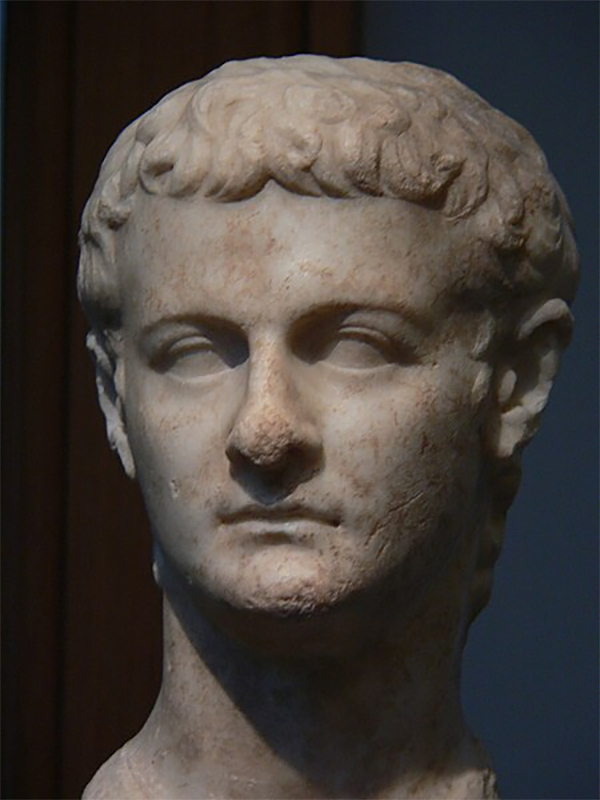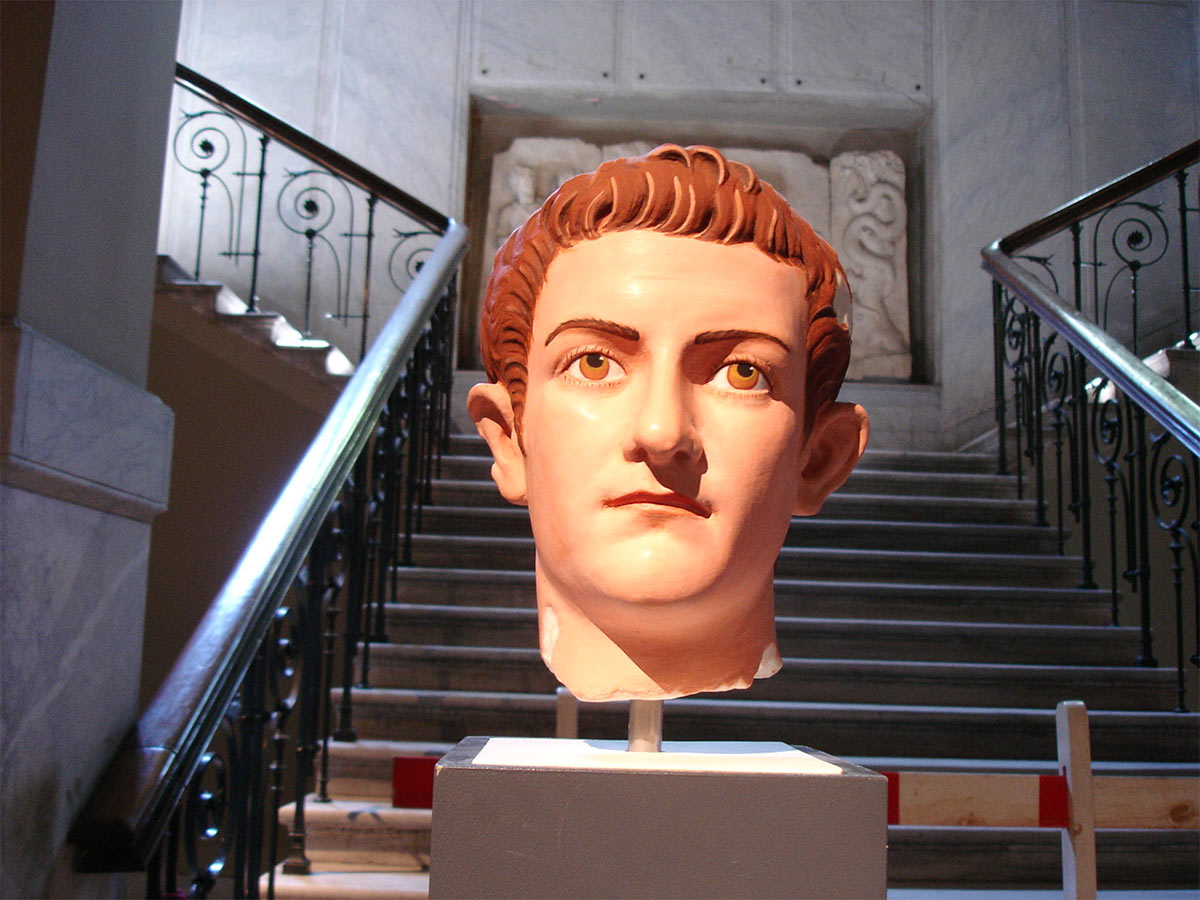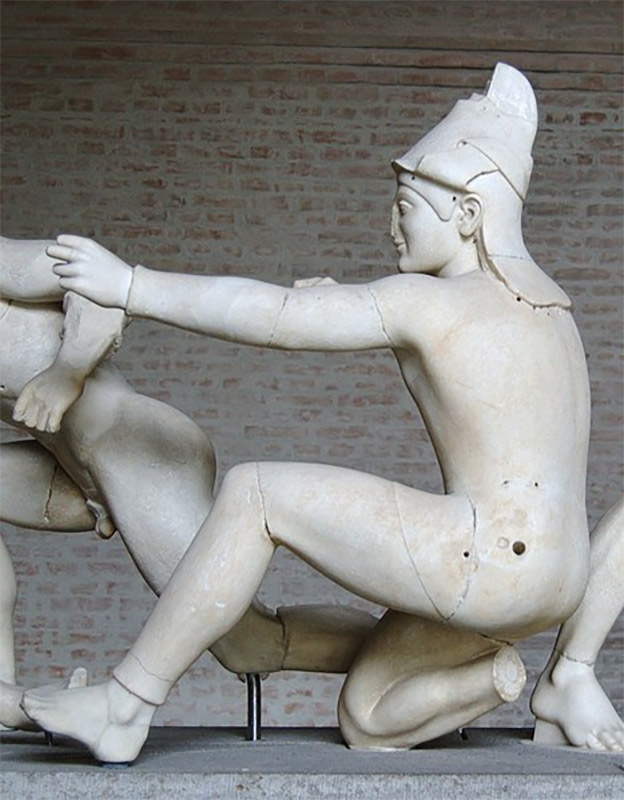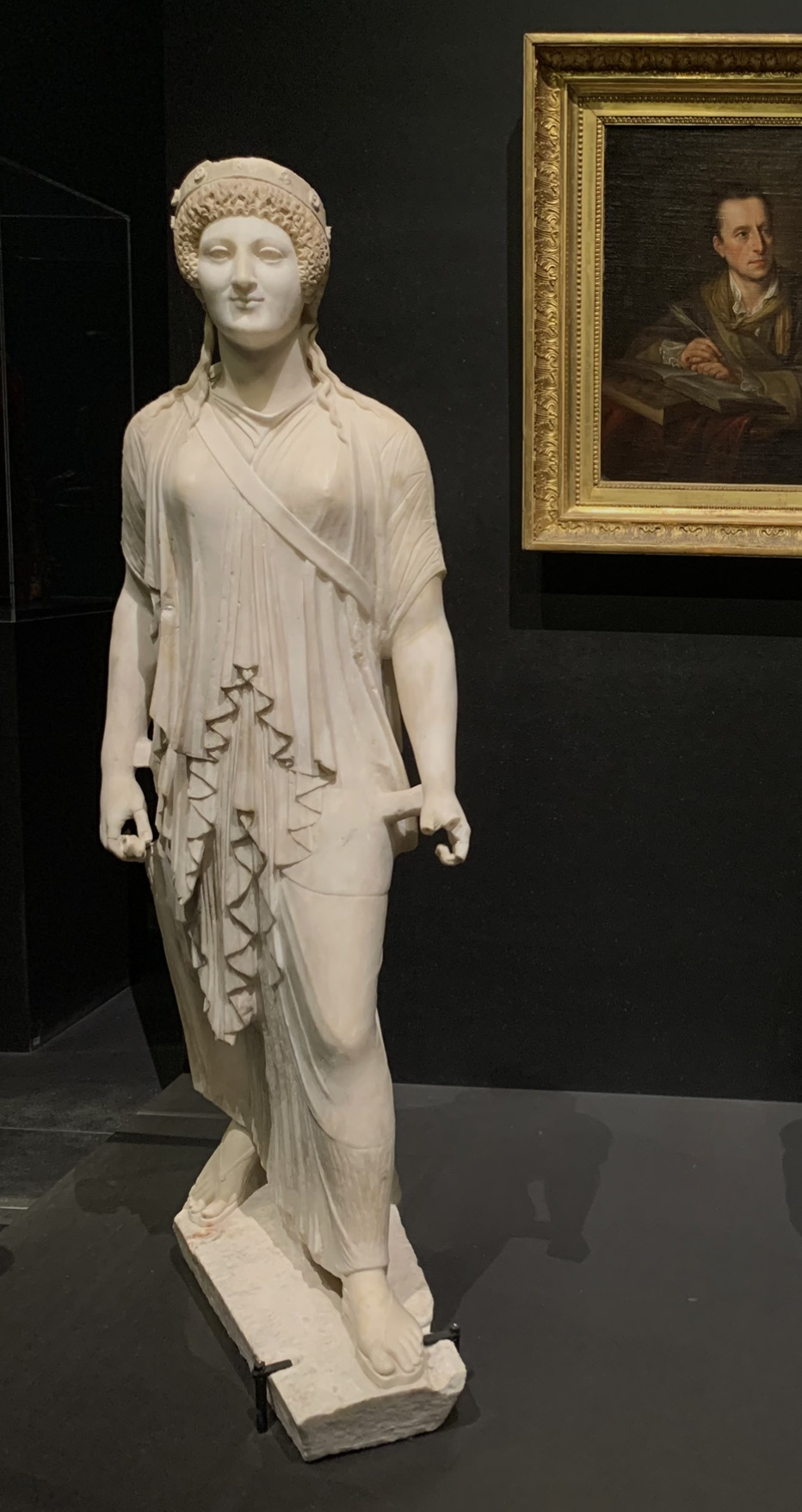Original Caesar Augustus

This full-length statue of Augustus Caesar was found in 1863 in the Villa of Livia. The home was once used by Augustus' third wife, Livia Drusilla.
The sculpture is actually assumed to be a copy of another one that was completely bronze. Unfortunately, that one has never been found, so experts can only work off the copies.
Caesar Augustus Painted

Augustus was originally painted, but only a few traces of the color remains today. Thankfully, it was enough for the statue to be copied and painted once again.
Interestingly, the paint traces tell us that this emperor had a monobrow! Honestly, we think the original looks a little better. This one is just a little too cartoony.
Original Lemnian Athena

Like many of the classic Greek statues, this Athena was originally cast in bronze. It was created by a sculptor named Phidias, who also designed many other famous works.
The classic marble statue we've seen countless times is a copy of the lost bronze original. It was headless when discovered but was pieced together by a German archaeologist Adolf Furtwangler.
Lemnian Athena Painted

We can only assume what she looked like. The original was painted, and it's no surprise that she was absolutely beautiful. Here we see a drawing of the bronze statue alongside her yellow and green paint.
Many experts now think the head attached to Athena isn't the intended statue. This means it could look completely different, but ultraviolet paint traces can't lie about the colors.
Original Emperor Caligula

Caligula is considered one of the most brutal Roman emperors in history. He was known for his madness, cruelty, viciousness, and extravagance.
It's hard to believe that this young man was that evil when looking at his bust but looks aren't everything. Some think Caligula's biggest crime is not treating writers well enough, so they recorded him poorly in history.
Emperor Caligula Painted

When painted, he looks even more innocent. While he has a stern brow, he almost looks like he may be a nice kid...almost. Even if his cruelty is overstated, his political decisions were dangerous and caused a lot of instability in Rome.
He's also Nero's uncle, another insanely cruel Roman emperor. We're guessing the writers were telling the truth when they stated how awful he was.
Original Cuirassed Torso

Cuirassed Torso from the Acropolis was uncovered in 1886. The breastplate shows what warriors wore into battle. We're used to the movies, so this is a great look into what they might have looked like.
Sadly, we don't know what the rest of the statue looks like. There weren't several copies like other famous pieces of art. Regardless, this gives us a good look into ancient warfare.
Cuirassed Torso Painted

Even better, ultraviolet and raking light revealed the beautiful colors of the original. Many statues were adorned with gold, making them stand out in a magnificent way.
The red and blue are likely adornments on the armor. Something like this could definitely be used to inspire other people to join the fight (not that they had much choice back then).
Original Archer at the Temple of Aphaia

Temples are the best place to find Greek and Roman statues, especially of gods and goddesses. The Temple of Aphaia is one of the oldest, and many great figures came from this area.
One is the Archer. Depicting a Trojan archer, it calls Sackler Museum home and accompanies other warriors of a gruesome battle scene. What colors do you think this sculpture was painted?
Archer at the Temple of Aphaia Painted

When painted, the statue takes on a very different appearance. The colorful statue was once painted to almost look like a jester. We're guessing they weren't a stealth team.
Some experts believe that this might be a Trojan prince considering how bright the shades are. He likely would have been brightly adorned to signal his superiority.
Original Peplos Kore

Peplos Kore is one of the oldest known statues of Archaic Greek art. It's the figure of a girl, and it stands nearly four feet tall. We're hoping it isn't to scale.
This statue dates all the way back to 530 BC. A few more have been found at the Acropolis, but Peplos Kore is by far the best. Some believe pieces may have broken off (other than the hand), but there weren't many copies to know.
Peplos Kore Painted

The statue may look like plain marble from afar, but if you look closely, you can still see the paint leftover. This gave archaeologists a good idea of the colors of the statue.
Researchers went to work, creating two possible interpretations of what the statue may have looked like. One was the girl as she appeared, and the other depicts her as Artemis, who she may have been when complete.
Original Roman Bust

Nowadays, we know that bronze weathers very quickly. The patina grows quickly to turn a beautiful sculpture into a teal color, then finally, a dark and dingey piece.
This bronze sculpture was the bust of a Roman man who lost much of his expression over the years. It's still amazing, but it likely looked much better in its original state.
Roman Bust Painted

When researchers began to recreate what the bronze head looked like, we could see its true form. The skin was stunningly golden with dark locks.
We could see that the eyes were painted in the original bronze, but green? Who knew? We don't get why you would paint a sculpture when it's cast in bronze, though.
Original Treu Head

Also known as "The Treu Head," this sculpture depicts a beautiful woman that many consider to be a goddess. Researchers aren't sure whether it's Aphrodite, Venus, or Minerva.
Luckily, the marble head is still mostly in one piece, although the nose is a little broken off on the side. Other than that, there are a few nicks and scratches that occur with time.
Treu Head Painted

Even with the wear and tear, the sculpture has obvious traces of paint leftover. That's one of the most important finds with this stunning sculpture.
There's black and red paint on the eyebrows and eyes, while yellow paint signals blonde hair. The skin also took on a pinkish hue. All of this allowed researchers to recreate the painted version.
Original Artemis

Artemis is another popular Greek goddess to portray. This statue is an early Greek Archaic style. While there have been copies, all are variants of the original.
Some experts think that the statue was once used in a cult shrine in Pompeii. Over the years, she's remained in fairly good shape, which can be hard for full-size statues.
Artemis Painted

Many of the remakes show colors that help archaeologists determine the original colors. Like many of the other Greek goddesses, Artemis has blonde hair and red eyes.
The colors still make her look like a cartoon, but they certainly add life to the statue! That being said, we can still see why experts believe it may have been used as a cult symbol.
 Author
Ron Winkler
Last Updated: August 08, 2025
Author
Ron Winkler
Last Updated: August 08, 2025